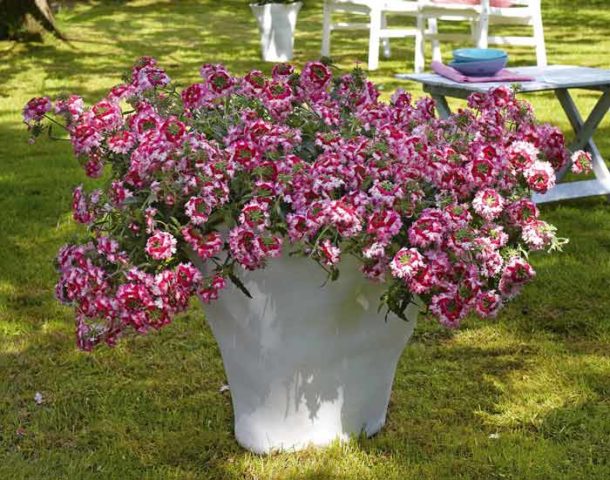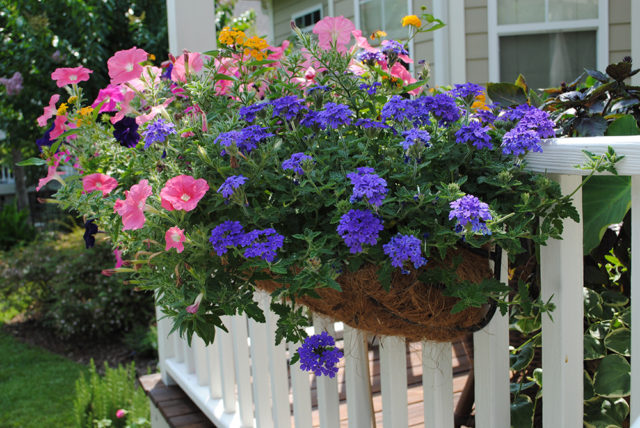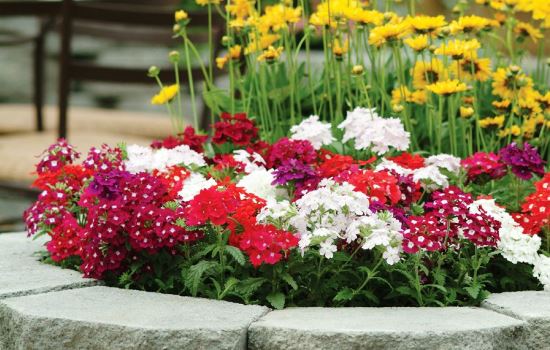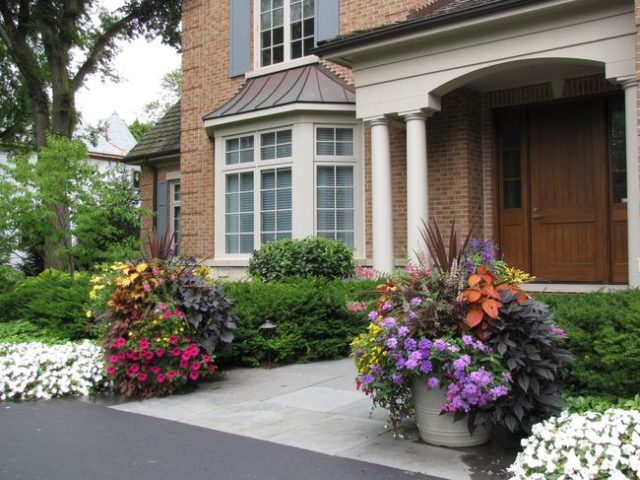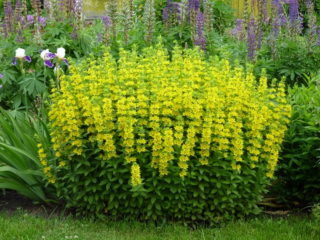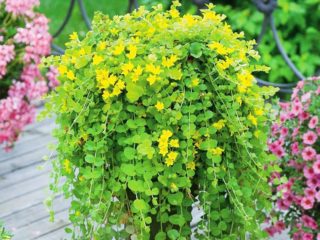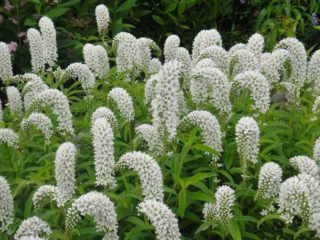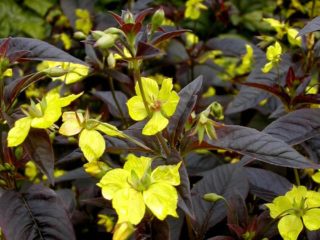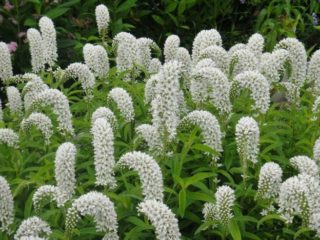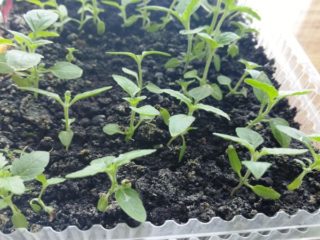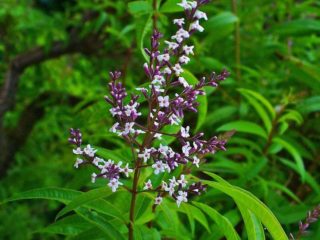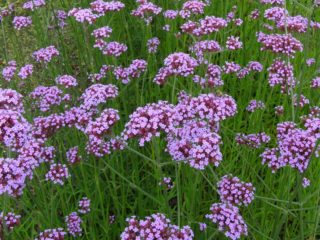Content
Among the creeping plants for the garden, ampelous verbena stands out. It can be successfully grown as an indoor flower, used in pots on the streets, and also planted in open ground. Dense branches with lush inflorescences cover the soil and combine well with most other flowers. Planting and caring for ampelous verbena will not cause difficulties even for novice gardeners if they know some of the secrets of the agricultural technology of this crop.
Description of ampelous verbena
Ampelous verbena is a perennial plant with dense shoots that densely cover the soil. The leaves are simple in structure, quite hard, covered with hairs. The flowers have 5 petals of different shades:
- red;
- pink;
- violet;
- blue.
One stem produces up to 30 inflorescences, so the bush blooms very luxuriantly.The plant is unpretentious, although it requires plenty of sunlight and moderate heat (prolonged frosts below +5 °C are not allowed). The culture is responsive to fertilizing. Hanging verbena needs additional fertilizer more than upright varieties.
Application in landscape design
Thanks to its lush flowering and variety of colors, ampelous verbena fits well into any garden. It is used in different ways:
- in unusual pots to decorate the recreation area;
- ground cover plantings perfectly hide the soil;
- in flower pots on gazebos and fences;
- in mixborders and discounts;
- in outdoor containers near the entrance, along garden paths.
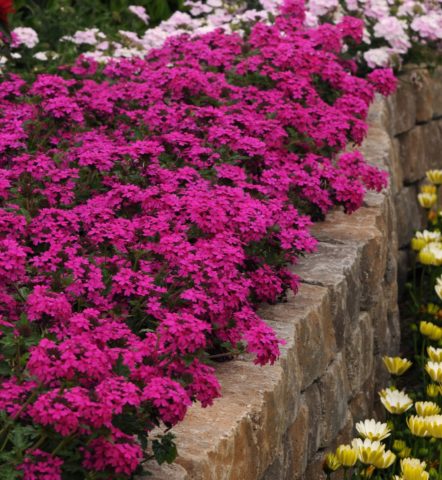
Seedlings can be planted both in the ground and on a small hill
Features of reproduction
Verbena can be propagated:
- seeds. Seedlings are grown, which are transferred to open ground in mid-May;
- layering. Pin the branch to the ground, sprinkle it with soil and get 2-3 layers;
- cuttings.
Cuttings are considered one of the most effective ways to propagate ampelous verbena. The procedure begins at the end of February. First prepare a mixture of sand, peat (in equal quantities) and perlite (a few pinches). Sequencing:
- cut cuttings from the upper shoots. It is necessary that they have 4-5 sheets of paper;
- the lower leaves are removed;
- cuttings are immersed in Kornevin’s solution;
- planted in moist soil and grown under glass at a temperature of 22-25 °C.
Verbena varieties
Verbena is characterized by great species diversity.In garden landscape design, different varieties can be used both together and separately.
Tiara Red Impr
Tiara Red Impr is one of the most beautiful varieties of ampelous verbena with red flowers. The culture is unpretentious and grows very quickly. The branches of this verbena are densely strewn with inflorescences.
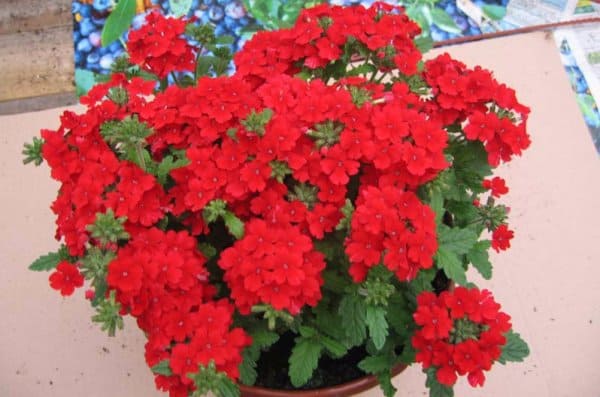
Verbena Tiara Red is suitable for growing in open ground and at home
Empress Peach
Empress Peach is an interesting variety with cream, fawn flowers. The shoots are small (up to 50 cm), but compact.
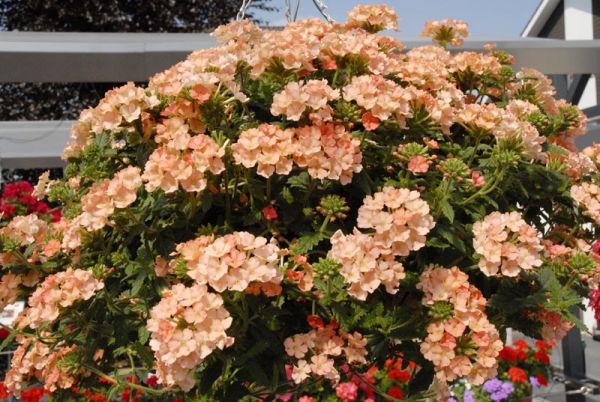
This variety of ampelous verbena blooms luxuriantly throughout the summer.
Imagination
This is a purple variety of ampelous verbena with rather large flowers.
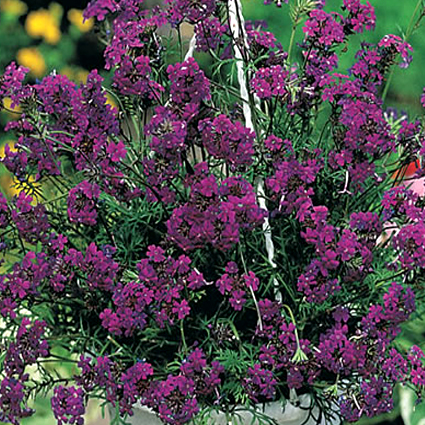
The bush grows well both in height and width, so it requires almost no pruning
Verbena ampelous Imagination goes well in compositions with bright orange-yellow flowers.
Obsession Burgundy
Ampel verbena Obsession Burgundy is distinguished by interesting flowers of cherry and wine tones. Large inflorescences look good on a compact bush.
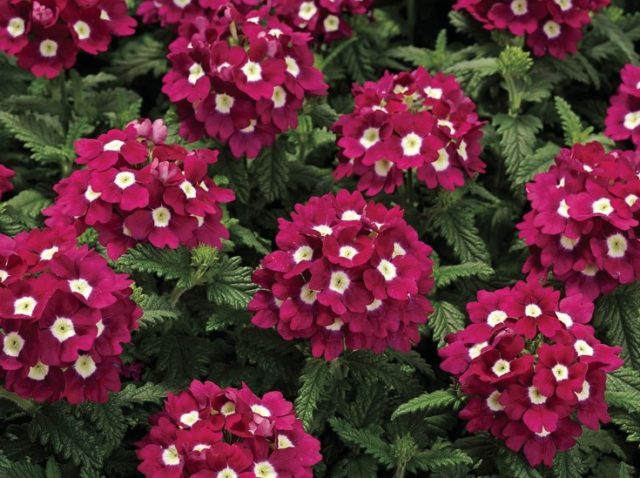
The flowers of this variety of ampelous verbena are very large - up to 7 cm in diameter.
Temari
This ampelous verbena produces beautiful lilac-pink flowers. The branches are drooping, low, but dense, completely covering the ground. The leaves are practically uncut.
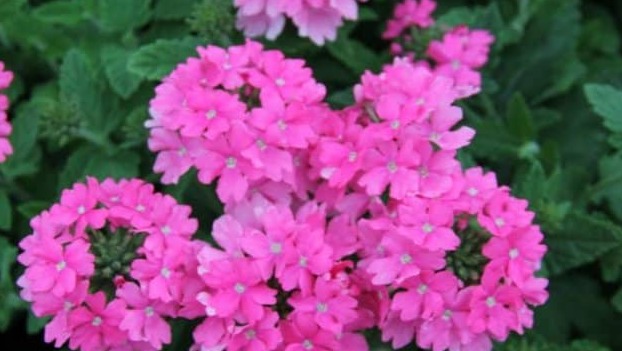
The inflorescences of this variety of ampelous verbena are round, symmetrical, and the bright flowers contrast well against the background of dark green leaves
Amethyst
Another attractive variety of ampelous verbena with soft lilac flowers with a white core. Blooms all summer.
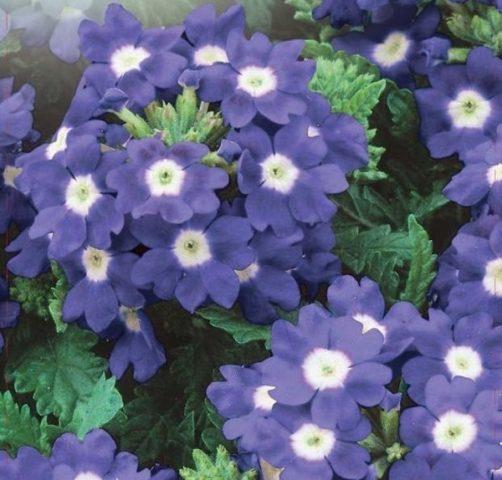
Ametist verbena produces soft lilac and blue flowers
Tapien
A very attractive variety of ampelous verbena with branched shoots and inflorescences in the form of scutes. Characterized by long flowering - until the beginning of autumn.
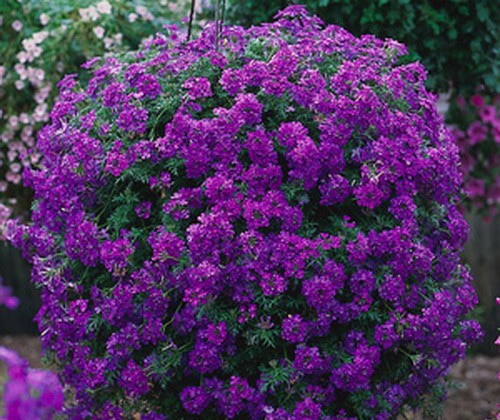
The flowers of this variety of ampelous verbena can be not only lilac, but also other shades
Lanai Candy Cane
This is one of the latest varieties of ampelous verbena, obtained several years ago. Pink petals with a bright red border look truly chic.
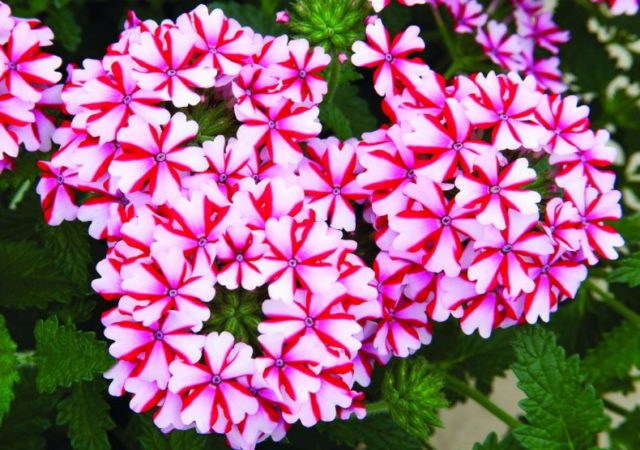
This variety of ampelous verbena produces flowers until the beginning of September
Estrella Voodoo Star
Another two-color variety. The colors include shades of bright red and pure white. At the same time, the plant is unpretentious and tolerates even dry periods quite well.
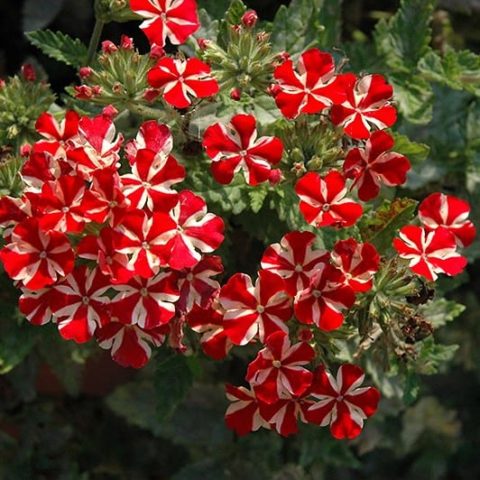
The bush of ampelous verbena Estrella Voodoo Star is very compact, shoots reach 30-40 cm in length
Quartz XP Silver
An attractive variety with silvery-white flowers. The plant is small - the branches grow up to 30 cm. It looks very beautiful both in the garden and in flowerpots.
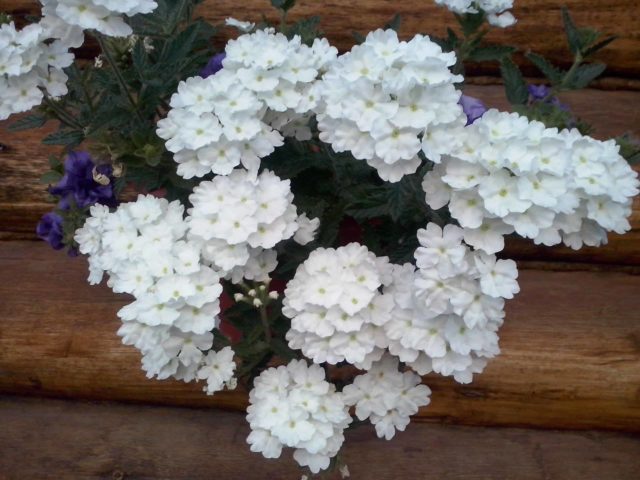
Milky white flowers look like snow flakes from afar
Planting ampelous verbena for seedlings
Verbena can be grown from seedlings. To do this, you need to purchase seeds in advance, prepare the soil and planting containers. Growing conditions are standard: timely watering, good lighting and fairly high (room) temperature.
Deadlines
You can plant seeds both in spring and summer (until early June). However, the best time is March or April. The sprouts will receive a sufficient amount of sunlight, thanks to which the verbena will quickly gain green mass. If the deadline is missed, you should no longer purchase seeds and plant them in the summer. It is better to buy ready-made seedlings.
Preparing the container and soil
Soil for seedlings can be found in any store or you can make a mixture yourself:
- 1 part garden soil;
- 2 parts peat;
- 0.5 parts sand.
You can also use a mixture of sand and perlite for growing.The soil should first be disinfected with a weak solution of potassium permanganate (1-2%). Then the soil is dried and warmed up immediately before planting.
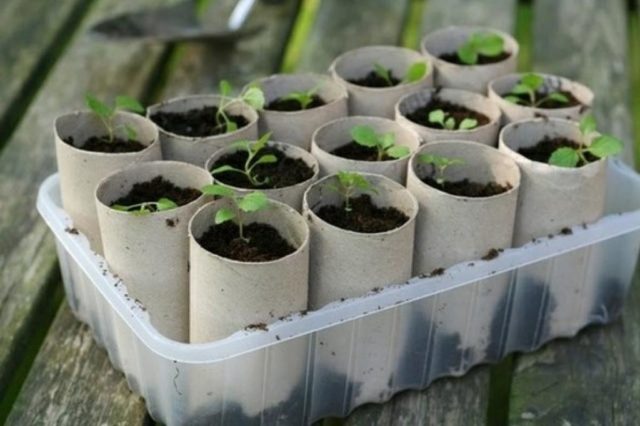
It is better to plant verbena seeds in individual containers - plastic cups, small pots or bowls
Sowing algorithm
Proper planting guarantees good germination. You can follow these instructions:
- Before planting, warm the seeds a little by placing them on a radiator for 1 hour.
- Sow 2-3 seeds in each glass. There is no need to bury it - just sprinkle it lightly with soil.
- Moisten, place in a warm place (+24-25 °C) and cover with glass or film.
- After the third leaf appears, they are seated.
In this case, the pot is placed on the radiator (several hours a day), and put in the refrigerator at night. This is repeated for 3 days, after which shoots appear.
Some varieties of ampelous verbena require stratification, about which there is a corresponding warning on the packet of seeds. This can be done in the standard way: 5 days before planting, place the seeds on a damp towel, place it in a plastic bag and leave it in the refrigerator.
Growing seedlings
Seedlings are grown on a south or east window, where the maximum amount of sunlight is observed. In March, the days are still short, and the weather is cloudy, so you need to provide illumination with a phytolamp, creating a day length of 12-13 hours.
Watering is provided moderate. Fertilizing at the stage of growing seedlings is done only once - after 2 weeks. They apply complex fertilizer; it is better to take a slightly smaller dosage so that the roots do not “burn” due to the abundance of nitrogen.
Then the lateral branches are activated, and ampelous verbena will quickly gain mass.
Planting and caring for ampelous verbena in open ground
Ampelous verbena is transplanted into open ground in mid-May. It can be placed in the garden or in outdoor containers. It is useful to harden the seedlings 10 days before, reducing the daytime temperature to 17-18 °C.
Transplantation into the ground
Seedlings are transplanted when return frosts are no longer expected. In most regions of Russia, this is mid-May, but in the south, ampelous verbena can be planted as early as the end of April. And in Siberia the period may increase slightly - until the last ten days of May.
Choose a sunny, open place, since the plant loves light very much. If possible, it should be elevated - stagnant moisture has a bad effect on the root system. When planting, make sure that the branches completely cover the soil. Therefore, the density is quite high - you can leave 25-30 cm between neighboring verbenas.
Algorithm of actions:
- The area is cleared and dug to a shallow depth.
- Dig several holes of shallow depth (it is necessary that the roots fit freely into them).
- Drain with a layer of pebbles, brick fragments or other stones.
- Prepare a mixture based on garden soil and humus (2:1) with wood ash (2-3 tbsp.).
- The seedlings are rooted and covered with soil.
- Water and mulch.
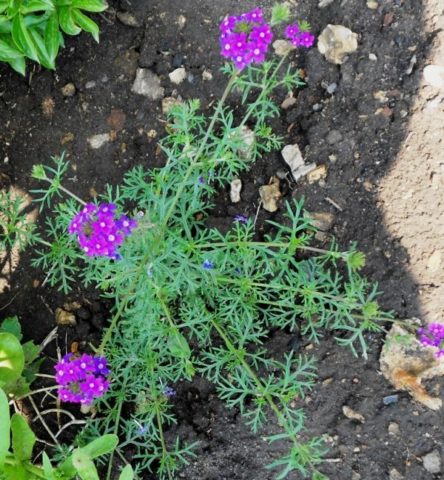
Verbena seedlings are not placed too densely; they grow well and cover the soil
Watering and fertilizing
If it is warm enough outside (at least 10 °C at night), ampelous verbena seedlings take root quickly. Further care for them is quite simple. Water as needed: the soil surface should be slightly moist.If you mulch the roots, watering will only be needed if there is a long absence of rain.
After transplanting, you can apply any nitrogen fertilizer to speed up growth.
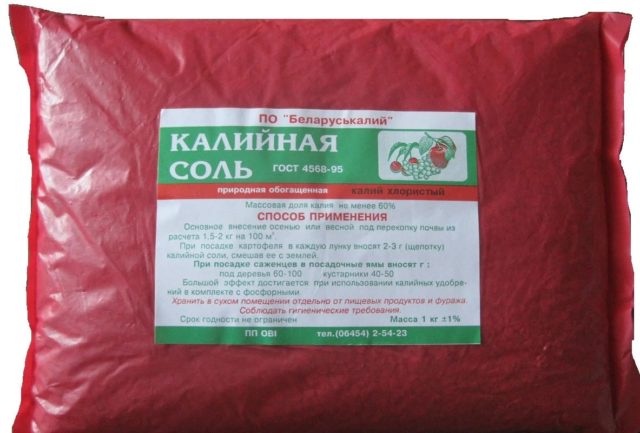
At the stage of bud formation and during flowering (1-2 times), superphosphates and potassium salt are added
An alternative way is to use a long-acting complex fertilizer. It can be applied 3-4 times per season with an interval of 1 month.
Loosening, weeding, mulching
It is recommended to mulch the roots of ampelous verbena immediately after planting. This can be done using sawdust, peat, spruce branches and other available materials. This layer will not only retain moisture, but will also prevent the growth of weeds.
You can loosen the soil once a month - after fertilizing. In this case, the nutrients will be absorbed faster by the roots. Weeding as such is not necessary, although sometimes it is still done. Verbena is very good at suppressing the growth of weeds, since its dense covering deprives them of access to light.
Trimming
Pruning must be done, otherwise the bushes will grow in height, but not in width. When a shoot 7-8 cm high is formed, pinch the top with your fingers. After this, active growth of side shoots will begin.
In the future, pruning is done only when necessary - bushes are formed and old or damaged shoots are removed. If the branch is too long, it should not be cut. It’s better to pin it in several places to the soil and get cuttings that will germinate very quickly and cover the surface with a green carpet.
Even minimal care will ensure lush and long-lasting flowering of ampelous verbena.
How to preserve ampel verbena in winter
Ampelous verbena is a perennial plant, but in most regions of Russia it can only overwinter at home. There are exceptions to this rule:
- In the southern regions, verbena can be left in the soil - short-term frosts down to -2 °C are not dangerous for it. If you are not sure, it is better to move it indoors.
- The straight verbena variety is characterized by moderate winter hardiness, so the plant can spend the cold period in the soil. However, it must be trimmed and covered with spruce branches.
Before the first frost, verbena is cut so that the length of the remaining shoots does not exceed 10 cm. When digging, you need to try to ensure that there is as much soil on the roots as possible. The plant is placed in pots or other containers and stored at a temperature of 10-12 °C (indoors, on insulated balconies or loggias).
Pests and diseases
Verbena is extremely rarely affected by fungal diseases. It is quite resistant to pests, although caterpillars and aphids feed on its foliage. A simple way to combat this is to spray the foliage with an aqueous solution of laundry soap shavings (2 tbsp per 1 liter of liquid). You can also use other folk remedies - a solution of baking soda, an infusion of onion peels or mustard powder.
If these measures do not help, it is advisable to use proven insecticides.
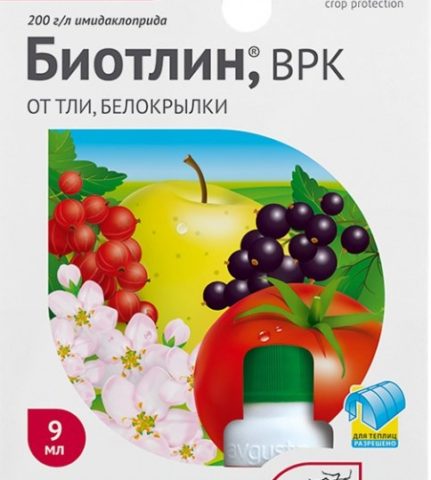
Can be treated with Biotlin, Decis or Confidor
The procedure is carried out in calm and clear weather (after sunset).
Conclusion
Planting and caring for ampelous verbena is not difficult, but requires compliance with the rules. Culture will decorate the garden, gazebo, veranda and other recreation areas. This is an unpretentious plant that produces beautiful flowers of different shades. Flowering continues all summer, so the garden looks beautiful and well-groomed.
